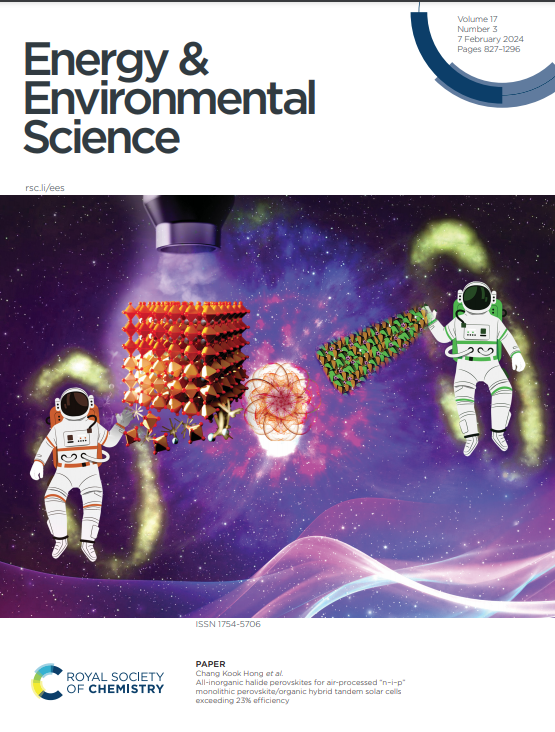Regulation of the Cathode Inner Helmholtz Plane in Dilute Ether Electrolytes Using Electric-Field-Responsive Solvent for High-Voltage Lithium Metal Batteries
IF 32.4
1区 材料科学
Q1 CHEMISTRY, MULTIDISCIPLINARY
引用次数: 0
Abstract
Raising the cut-off voltage to 4.6 V can boost the energy density of lithium metal batteries (LMBs) with LiCoO2 cathode. However, the unfavorable cathode electrolyte interphase (CEI) formed on high-voltage cathode when using Li metal-compatible ether electrolytes leads to short lifespan of batteries. Here we harness the battery intrinsic electric field to manipulate the cathode inner Helmholtz plane (IHP) during the battery’s charge through simply introducing an electric-field-responsive solvent into an ether electrolyte. Specifically, 2,2-difluoroethyl trifluoromethanesulfonate (DTS) as a weak solvated co-solvent preferentially adsorbs on the cathode surface under the electric field activation. Owing to the majority of “high-voltage fragile” 1,2-dimethoxyethane ether molecules squeezed out from the IHP by DTS, a LiF-rich and organics-less stable CEI film is formed, which minimizes cathode cracking and structure degradation under high-voltage. The DTS-containing electrolyte shows superior cycling stability of LMBs under harsh conditions of 4.6 V, 4.2 mAh cm-2 cathode loading and 15 μL lean electrolyte. Furthermore, the feasibility of this concept is validated in practical Ah-level pouch full cells. This work highlights the significance of the IHP modulation and interfacial chemistry, providing an alternative pathway towards ether-based electrolytes engineering for high-voltage LMBs.求助全文
约1分钟内获得全文
求助全文
来源期刊

Energy & Environmental Science
化学-工程:化工
CiteScore
50.50
自引率
2.20%
发文量
349
审稿时长
2.2 months
期刊介绍:
Energy & Environmental Science, a peer-reviewed scientific journal, publishes original research and review articles covering interdisciplinary topics in the (bio)chemical and (bio)physical sciences, as well as chemical engineering disciplines. Published monthly by the Royal Society of Chemistry (RSC), a not-for-profit publisher, Energy & Environmental Science is recognized as a leading journal. It boasts an impressive impact factor of 8.500 as of 2009, ranking 8th among 140 journals in the category "Chemistry, Multidisciplinary," second among 71 journals in "Energy & Fuels," second among 128 journals in "Engineering, Chemical," and first among 181 scientific journals in "Environmental Sciences."
Energy & Environmental Science publishes various types of articles, including Research Papers (original scientific work), Review Articles, Perspectives, and Minireviews (feature review-type articles of broad interest), Communications (original scientific work of an urgent nature), Opinions (personal, often speculative viewpoints or hypotheses on current topics), and Analysis Articles (in-depth examination of energy-related issues).
 求助内容:
求助内容: 应助结果提醒方式:
应助结果提醒方式:


